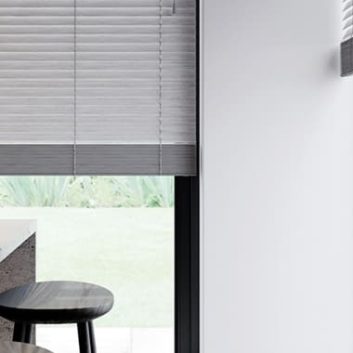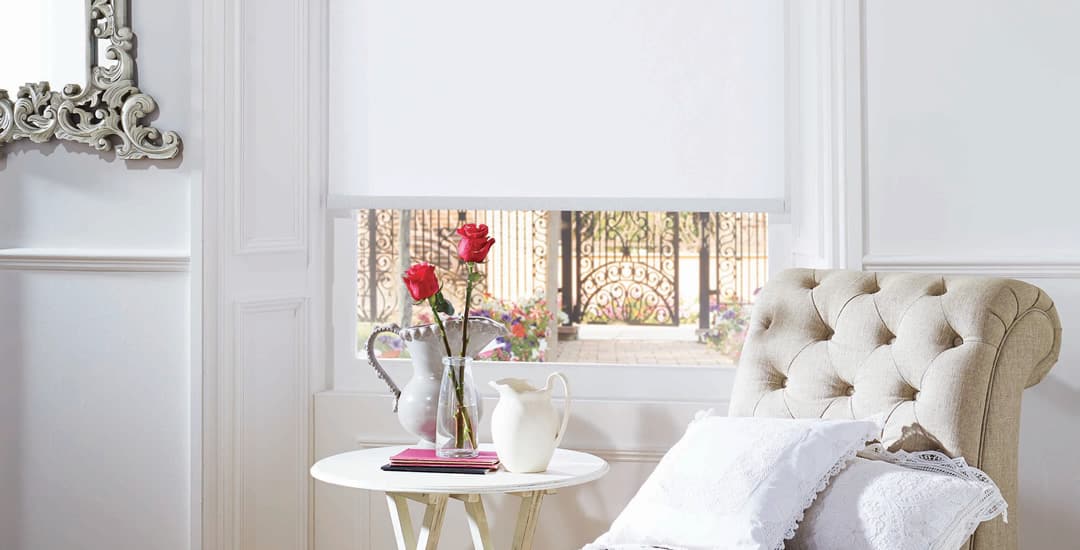
Yes, white blinds can be made into blackout blinds; in fact, any colour of blinds can be blackout blinds. It isn’t the colour of the blind, or even the thickness of the material that it is made from that dictates whether or not a blind has blackout capabilities; rather, it is the coating or lining used on the back of the blind.
Naturally, a blind that is made of a very thick material or an impermeable fabric like rigid PVC will block light effectively all on its own; but even a blind made of a very thin material can be a blackout blind with the right lining or backing added to achieve this; it is this part of the blind that stops light from passing through.
In fact, the most popular colour for blackout roller blinds that we sell is white, followed by other pale shades like off-white, cream, and light grey.
Can white blinds be blackout without having a black lining?
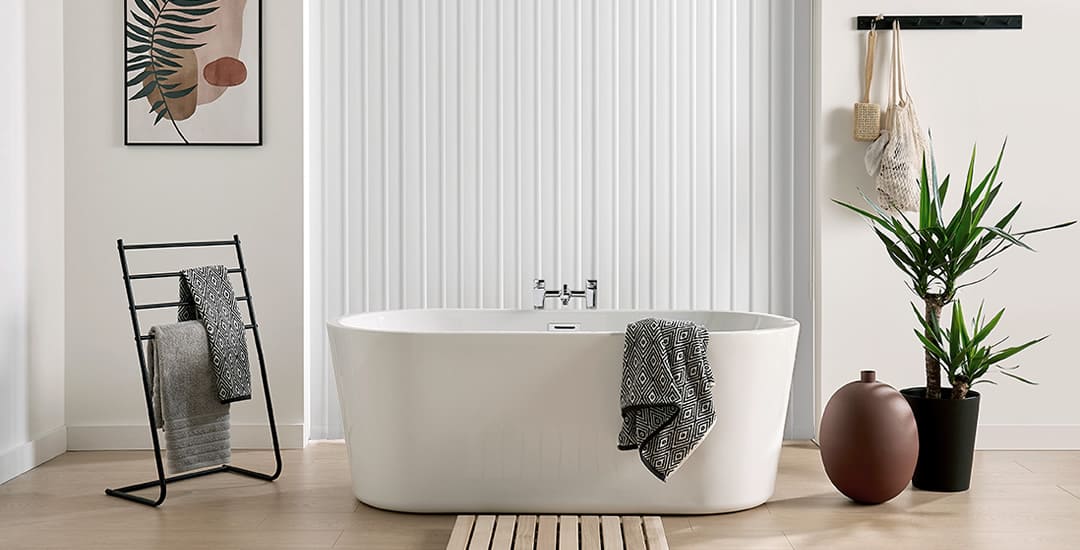
Yes! Another common misconception about blackout blinds is that the lining or backing (the part of the blind facing out into the garden or street rather than the part you see from inside of the house) has to be black or at least, a dark colour.
This isn’t true either, and again, comes down to the assumption that for a blind to block out the light it must either be very thick or very dark, or both.
Something else that often comes as a surprise to people is the fact that most blackout linings for blinds are white; this does seem potentially counterintuitive, but if you think about it, it is fairly unusual to see the back of a blind in black.
How can white blinds be blackout?
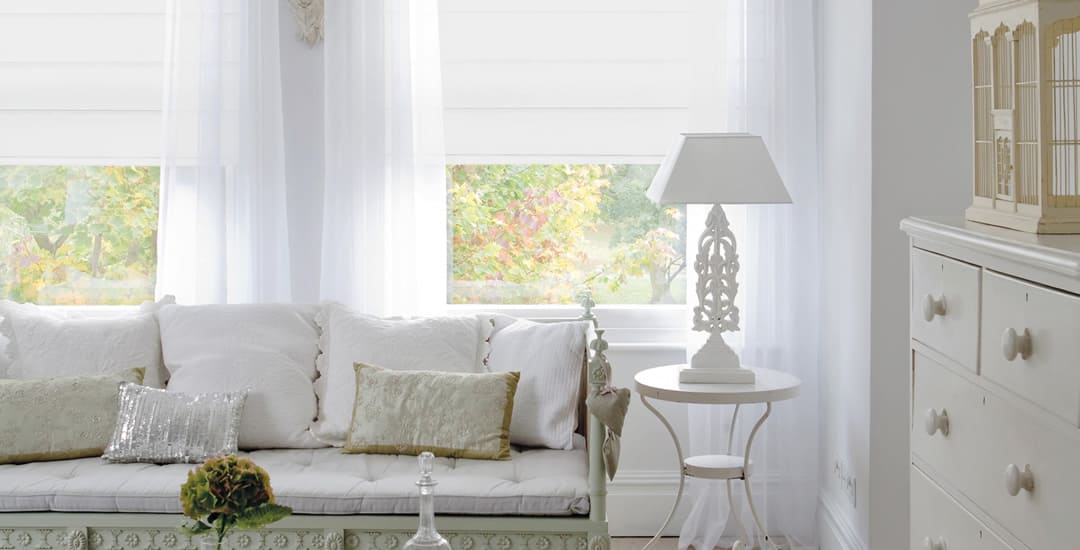
White blinds can be blackout blinds by means of the addition of a special blackout lining (in the case of Roman blinds) or a special blackout coating or finish on the back/street-facing side of the blinds for roller blinds and vertical blinds.
Not all types of blinds can be blackout blinds, because the style or construction of some types of blinds doesn’t allow for this feature; but any type of blind that can be made as a blackout blind can be made as a blackout blind in any colour (or pattern/design, where relevant) of your choosing.
What type of white blinds can be blackout blinds?
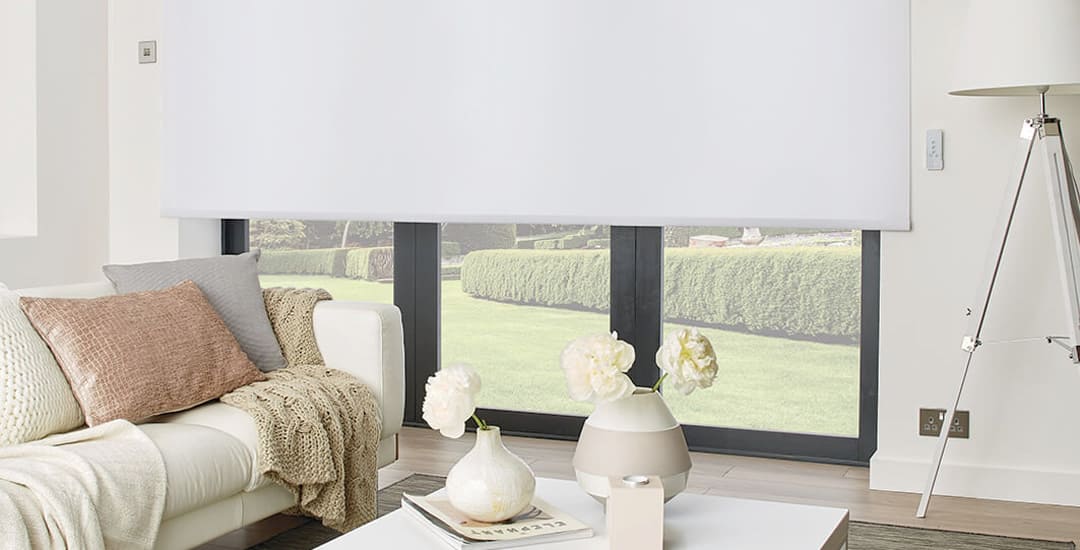
As mentioned, not all types of blinds are or can be true blackout blinds. Venetian blinds, wooden blinds, and faux-wood blinds all have slats, and the tiny holes that their lift cords pass through allow a little light into the room.
Even for blinds of these types that have ladder tapes covering their lift cords, there may by a small amount of light leakage through the slats themselves.
Slatted blinds with ladder tapes do achieve an almost total blackout, but not quite! Day and night blinds or zebra blinds too can’t achieve a full blackout due to their sheer stripes, however carefully you align them (despite the claims of some manufacturers to the contrary)!
You can get white blackout roller blinds, white blackout Roman blinds, and white blackout vertical blinds too.
Both white wooden blinds and white faux-wood blinds achieve an almost (but not full) blackout.
White blackout roller blinds are the most popular type of white blackout blinds we sell overall, likely because roller blinds are the best-selling blinds type as a whole.
White vertical blinds in a blackout finish are also really popular; however, if you have an open window behind the blind or even a breeze coming into the room from an open interior door, this could make the blind’s louvres sway, and admit light.
There are also small gaps at the top and bottom of the blind to allow for the blind’s louvres to rotate, which can again admit some light, so overall, white blackout vertical blinds are good, but aren’t my favourite for a serious blackout.
If you’re looking for a particularly distinctive or luxurious blind, white blackout Roman blinds are very prestigious and achieve a very effective blackout. For Roman blinds, we tend to use an ivory or soft white blackout lining, so that they don’t look quite so stark from outside of the home.

